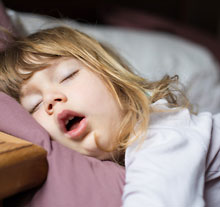Journal Digest: Amygdala and ‘Broken Heart’ Syndrome; Digital Intervention and Paranoia Symptoms; Snoring in Children and Brain Development; Impaired Self-Control and Binge Eating Behavior; HS Football and Midlife Mental Health Problems
Amygdala Activity May Be Biomarker for ‘Broken Heart’ Syndrome

People who develop Takotsubo syndrome (TTS) —a stress-triggered form of heart failure commonly known as “broken heart syndrome”—show elevated amygdala activity in years prior to the onset of disease, a study in European Heart Journal has found. The amygdala is part of the brain’s limbic system and a key regulator of the stress response and heart function.
Researchers at Massachusetts General Hospital and colleagues examined PET scans from 41 adults who subsequently developed TTS (TTS was diagnosed between one month and four years after the scan) and 63 adults with similar demographics who did not develop TTS. The scans showed that on average individuals who developed TTS had significantly higher activity in the amygdala than people without TTS. After adjusting for other TTS risk factors, including smoking and a history of depression, the researchers found that elevated amygdala activity was associated with a 64% increased risk of future TTS.
The researchers also found that among individuals who did develop TTS, those with the highest amygdala activity developed symptoms about two years earlier on average than those with lower amygdala activity.
“These study findings suggest that increased [amygdala activity] predates the development of TTS and may effectively prime the limbic system to respond more vigorously to acute stressors, thus increasing TTS risk,” the researchers wrote. “That higher relative [amygdala activity] associates with earlier TTS development suggests that those with the highest [amygdala activity] are relatively more prone to develop TTS upon stress exposure and may develop the syndrome sooner.”
Radfar A, Abohashem S, Osborne MT, et al. Stress-Associated Neurobiological Activity Associates With the Risk for and Timing of Subsequent Takotsubo Syndrome. Eur Heart J. March 26, 2021. Online ahead of print.
Digital Intervention Found to Reduce Paranoia Symptoms

A digital intervention that combines virtual psychotherapy and an interactive mobile app appears to reduce some symptoms of paranoia better than usual care, according to a study in JAMA Psychiatry. In particular, the blended digital therapy known as SlowMo was effective at reducing persecution-related delusions in adults with schizophrenia.
The study involved 361 adults aged 18 and older who had been diagnosed with schizophrenia and persistent and distressing paranoia, as assessed by the Schedules for Clinical Assessment in Neuropsychiatry and Green et al Paranoid Thoughts Scale (GPTS). All of the participants in the trial received usual care (typically involving antipsychotics and outpatient visits); 181 also received access to SlowMo.
The SlowMo therapy consists of eight online cognitive-behavioral therapy sessions (given over 12 weeks) that are augmented with a mobile app that includes such features as animated vignettes, games, and personalized thought bubbles. Paranoia and other behavioral symptoms were assessed at the end of the 12-week study and at the 24-week follow-up.
The participants who received SlowMo showed greater improvements in their GPTS scores after 12 weeks compared with those receiving only usual care, though there were no longer differences between the groups at 24 weeks. Among secondary measures, the SlowMo group reported fewer persecutory delusions, a greater belief flexibility (admitting one’s beliefs might be mistaken), and improved well-being at both 12 and 24 weeks compared with those in the usual care group.
“The results indicate that the treatment was effective, in part, through helping people to slow down their thinking and to worry less,” wrote the investigators from King’s College London and colleagues. “Further understanding of the mechanisms of action of SlowMo is warranted.”
Garety P, Ward T, Emsley R, et al. Effects of SlowMo, a Blended Digital Therapy Targeting Reasoning, on Paranoia Among People With Psychosis: A Randomized Clinical Trial. JAMA Psychiatry. April 7, 2021. Online ahead of print.
Habitual Snoring in Children May Alter Brain Structure

Many studies have found a connection between habitual snoring in children (a sign of obstructive sleep disordered breathing) and behavioral problems such as inattention or hyperactivity. A study appearing in Nature Communications now has found evidence to suggest that the structure of the frontal lobes of children who regularly snore may differ from those of children who do not snore.
Investigators at the University of Maryland School of Medicine and colleagues analyzed behavioral and imaging data from over 10,000 youth (aged 9 and 10) available from the national Adolescent Brain Cognitive Development (ABCD) Study. Of this sample, they identified 661 children with habitual snoring (at least three nights per week).
As with previous studies, this analysis found that the children with habitual snoring had more behavioral problems than nonsnoring peers, as assessed by the Child Behavior Checklist (CBCL). MRI brain scans of the children also revealed that children with habitual snoring had less gray matter volume in multiple areas of the frontal lobe, an area involved in behaviors like social interactions and impulse control. The children who most frequently snored were more likely to have greater reductions in frontal lobe volume and higher CBCL scores compared with children who snored less.
Due to the cross-sectional nature of the study, the authors noted that additional research is needed to understand the relationship between snoring, brain structure, and behavioral problems. Still, the findings point to the importance of routinely screening children for snoring, they wrote.
Isaiah A, Ernst T, Cloak CC, et al. Associations Between Frontal Lobe Structure, Parent-Reported Obstructive Sleep Disordered Breathing and Childhood Behavior in the ABCD Dataset. Nat Commun. 2021; 12(1): 2205.
Impaired Self-Control May Not Underlie Binge Eating Behaviors

Some researchers theorize that binge-eating episodes arise from reduced self-regulation when stressed. A neuroimaging study of women published in the Journal of Neuroscience has found this may not be case.
The study by researchers at the University of Cambridge and colleagues included 33 women with bulimia nervosa, 22 women with the binge/purge subtype of anorexia nervosa, and 30 women with no eating disorder. All the women completed a fast-paced computer task that tested their ability to self-inhibit (for example, avoid pressing a button when a certain visual cue appeared) while receiving an MRI scan. All the women completed the inhibition task on two consecutive days, once under normal conditions and again after being exposed to stress.
The researchers observed that under normal conditions, the women with bulimia performed worse on proactive inhibition tasks (not pressing a button based on directions given in advance) than women who did not have an eating disorder. Women with and without eating disorders performed similarly on reactive inhibition tasks (not pressing a button after seeing a certain stimulus). Although the three groups of women showed differing brain activity when conducting the inhibition task under stress, women with bulimia or binge/purge subtype of anorexia nervosa performed as well on the task while stressed as they did under normal conditions.
“Our findings counsel against a simplistic, stress-induced failure of regulation as an overall explanation for binge eating,” the researchers wrote. “Moreover, the [MRI differences] across diagnostic groups suggest that models of binge-eating based on [bulimia nervosa] may not apply to [binge/purge subtype of anorexia nervosa].”
Westwater ML, Mancini F, Gorka AX, et al. Prefrontal Responses During Proactive and Reactive Inhibition are Differentially Impacted by Stress in Anorexia and Bulimia Nervosa. J Neurosci. April 12, 2021. Online ahead of print.
High School Football Not Linked With Midlife Mental Health Problems

Men who played high school football are no more likely than those who did not to experience mental health problems such as anxiety, depression, anger problems, or cognitive difficulty in midlife, suggests a study in Clinical Journal of Sports Medicine.
Researchers from Harvard Medical School and the University of North Carolina analyzed data from an online survey of 407 men aged 35 to 55. The survey included questions about the men’s participation in competitive sports (including before and after high school), current cognitive and physical health, and medical history (including any experience with concussions).
The sample included 123 men who played at least one year of high school football, 69 who played another contact sport (for example, soccer), 97 who played a noncontact sport (for example, swimming), and 118 who played no high school sports. Participants who also played college sports were included; two participants who played semiprofessional football were excluded, however.
As expected, men who played football reported more concussions than those in all other groups, while men who played other contact sports reported more concussions than those who played noncontact sports or no sports. Men in the noncontact sport group and no sports group reported similar levels of concussions.
Despite the higher concussion rate, the group who played football did not report a significantly greater lifetime history of any surveyed health problem except for headaches and chronic pain. Men who played high school football did not report higher levels of pain or headaches during the past year compared with other groups, however, though they did report more sleep problems in the past year. ■
Iverson GL, Merz ZC, Douglas T. High-School Football and Midlife Brain Health Problems. Clin J Sports Med. April 12, 2021. Online ahead of print.



